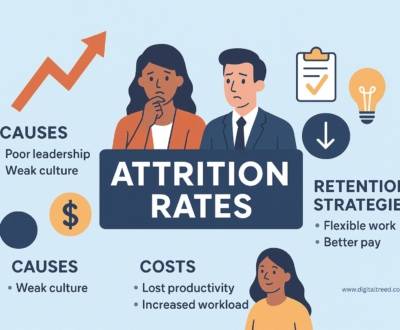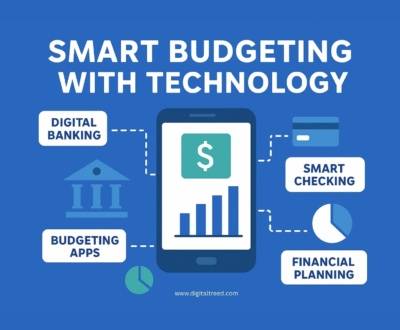For a program to run successfully, all its elements and external libraries need to be capable of synchronizing and working together toward committing to the task at hand. This is where static vs dynamic linking techniques come into play. It’s the procedure of translating code to make it comprehensible for the operating system, and for the program to run.
Static and dynamic linking are two distinct methods used in computer programming to guarantee that applications are optimized for maximum performance and dependability.
Generating Executables
Before we begin with linking methods, let’s first understand the procedure of generating the executable of any part of code. Formally, a computer program is a sequence of statements in a programming language ordering the CPU what to do.
To run any program, we transform the source code into machine code. We do this by willingly compiling the code to an intermediate level and then transforming it to assembly-level code. After that, we link the assembly code with other libraries or modules it operates.
So, linking is the procedure of combining external programs with our program to execute them successfully. After linking, we finally obtain our executable:
Linking
The assembler translates our compiled code to machine code and keeps the result in an object file. It’s a binary representation of our program. The assembler provides a memory location for each object and teaching. Some of these memory locations are virtual, i.e., they’re offsets relative to the base address of the foremost instruction.
That’s the case with references to external libraries. The linker fixes them when combining the object file with the libraries.
General, we have two mechanisms for linking:
- Static
- Dynamic
Static Linking
In static linking, the system linker copies the dependences into the final executable. At the time of linking an external library, the linker encounters all dependencies that are described in that library. And it replaces them with the related functions from the library to fix dependencies in our code. Afterward, the linker generates the final executable file that we can execute on the underlying machine.
For instance, let’s say our application reaches the function print() from an external library named Library. The assembler causes the object file with all native symbols determined to their memory addresses. The external reference print() cannot be fixed. The linker loads this library and sees the definition of print() in it. Then, it maps to print() to a memory location and thus fixes the dependency:
So, a statically linked file contains our program’s code as well as the code of all the libraries it gathers. Since we copy entire libraries, we require space on both the disk and in the main memory because the resultant file may be very large.
Read Also: Top IT and Software Companies in Vizag
Static Linking: Pros & Cons
Pros of Static Linking
- Faster execution period - since all modules are assembled into a single executable file, programs can execute quicker.
- Improved memory management - Static linking authorizes better memory management since all modules are linked together straight.
- Easier to understand and implement - the compilation procedure with static linking is easier than dynamic linking as it involves fewer steps.
- Prevents code duplication - static linking guarantees that code is not repeated across programs, leading to more efficient usage of system resources.
- Greater control over program architecture - developers have tremendous control over how a program is structured when utilizing static linking, as they can decide which modules to include and exclude.
- Reduced overhead - static linking benefits reduce the amount of resources needed to run programs since all libraries are already linked together.
Cons of Static Linking
- Harder debugging and troubleshooting - since modules have already been linked together before runtime, it can be hard to debug or troubleshoot any mistakes that may occur.
- Limited compatibility between libraries - due to the repaired structure of a compiled program, it can be hard to use various libraries due to incompatibilities.
- Reduced security compared to dynamic linking- static linking is weak to malicious exploitation as all components must be loaded at once without any extra loading period during runtime.
- Cannot be changed at runtime - since all modules are assembled into a single executable file, it cannot be modified during runtime.
- Incompatible with certain libraries - due to their fixed structure, statically linked programs may not support more latest libraries or incompatibilities between distinct versions of the same library.
When to Operate Static Linking?
We operate static linking where we need secure and mutually exclusive strategies that don’t share any code. We also utilize static linking for embedded projects where we want a controlled and speedy execution environment with no run-time linkage problems. Most small form element devices such as video controllers in a mobile handset use static linking in their boot procedure.
Dynamic Linking
In dynamic linking, we copy the names of the external libraries into our last executable as unresolved symbols. We do the actual linking of these unresolved symbols just at runtime. How?
When facing an unresolved symbol, we query RAM for it. If the corresponding library isn’t loaded, the operating system loads it in the memory. So, the operating system performs dynamic linking for us by fixing each external symbol on the first muss. As a consequence, we load only a single copy of a library in memory and all methods use it.
Read Also: Top 15 IT Companies In Coimbatore: 2024 Checklist
Dynamic Linking: Pros & Cons
Pros of Dynamic Linking
- Separation of code – dynamically linked elements can be developed and maintained by other teams independently from each other.
- Better portability – programs operating dynamic linking can be readily ported to other platforms.
- Reduced memory requirements – less intensive memory resources are needed, since modules are shared across various programs that use them.
- Faster loading times – elements are only loaded when they’re required, rather than upfront.
- Improved scalability – since modules are loaded on request, dynamic linking delivers an easy and efficient method to scale a program to accommodate various hardware or operating systems.
- Easier maintenance – with dynamic linking, changing the code only needs updating individual components without having to recompile the whole program.
Cons of Dynamic Linking
- Unreliable versions - using third-party libraries implies having no control over their stability and accurateness, so any differences could affect the correctness of your code’s output.
- Fragility – due to the modular nature of dynamic linking, any modifications to the main program can lead to constituents not being loaded perfectly or incompatible libraries being used.
- Security risks - when depending on external libraries, there is an improved risk of malicious code being infiltrated into the system.
- Dependency issues - when links die due to missing or outdated dependencies, it can cause issues with execution at runtime.
- Reduced performance - certain procedures may take longer if dynamic linked libraries have been named more than once during performance time.
- **Incompatible formats **- compatibility problems between different platforms can result in difficulties while transferring information between them or debugging issues caused by distinctions in architecture or operating system versions.
When to Use Dynamic Linking?
We utilize dynamic linking when we have many applications using a standard set of libraries.
For instance, let’s suppose we have a set of microservices with each operating the queue service (e.g., RabbitMQ). Then, we can optimize resources utilizing dynamic linking.
Static Versus Dynamic Linking
Basically, static linking concerns compiling libraries into your app or program as part of the build procedure. Dynamic linking lets the operating system hold off and load shared libraries into memory only when the app is established.
Both of these linking methods are different in how they are built, shipped, and managed. But the distinction between static and dynamic linking isn’t just about your choices or user experience. You’ll need to select based on individual use cases, including what you’re building and where you’ll be shipping it.
Sometimes, the decision to utilize one over the other might be taken out of your hands.
For instance, you’ll always require to use dynamic linking for building plugins. Also, it can be the only practical method to meet requirements for free-software licenses such as LGPL.
Your compiler may be a limit. Some compilers (such as the Google Go compiler commonly used to perform with Google Cloud data sources) will only let you compile binaries statically.
But how do you select when the decision is left up to you?
- If it comes down to implementation, you might like to consider dynamic linking. If numerous programs are utilizing the same shared libraries, dynamic linking can outperform a statically linked app.
- Evaluate whether your program makes a high volume of library calls or a lot of small calls to library routines. In that example, statically linked programs may perform better.
Another reference is the level and frequency of updates that you’re predicting. Shipping bug fixes and updates are far less efficient with statically linked programs. You would require to compile and ship the complete executable file again each time.
Read Also: Boost Your Productivity Using Transcription
With dynamic linking, users will load the most delinquent version of a program every time it's run because it will make a call to the latest version of the libraries. So you can make the modifications required without needing to re-compile everything.
Conclusion
In brief, static and dynamic linking are two linking mechanisms. The main distinction between static and dynamic linking is that static linking copies all library modules employed in the program into the final executable file at the final step of the compilation while in dynamic linking, the linking occurs at run time when both executable files and libraries are set in the memory.
I have been serving web content with my passionate writing skills since 2020. My skills have benefited clients from 20 countries, resulting in 10x audience interactions, improved readability, and SEO-friendly content.

About us and this blog
We are a digital marketing company with a focus on helping our customers achieve great results across several key areas.
Request a free quote
We offer professional SEO services that help websites increase their organic search score drastically in order to compete for the highest rankings even when it comes to highly competitive keywords.










